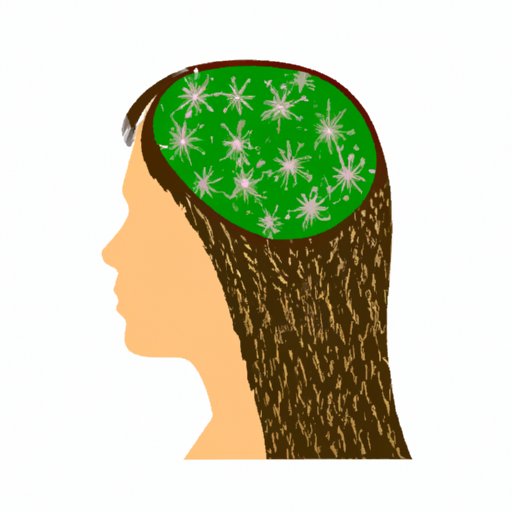
I. Introduction
Are you dealing with head lice and struggling to find a solution? Head lice infestations are a common problem that affect millions of people every year, causing itching, scalp irritation, and discomfort. In this comprehensive guide, we aim to provide you with the information you need to effectively treat head lice and prevent reinfestation. We will discuss the causes of head lice, the symptoms, and the best treatment options for lice removal.
II. Understanding Head Lice: Causes, Symptoms, and Proper Treatment
Head lice are tiny, wingless insects that live on the scalp and feed on human blood. They are typically spread through direct head-to-head contact, but can also be transmitted through items like brushes, clothing, and bedding. Common symptoms of head lice include intense itching, red bumps on the scalp, and the presence of lice or eggs on hair strands or scalp.
To properly diagnose head lice, you need to examine the scalp and hair for their presence. You may also need to consult your healthcare provider. Treatment options for head lice can include over-the-counter products such as shampoos and topical ointments, as well as prescription medications.
III. The Ultimate Guide to Treating Head Lice: Everything You Need to Know
There are numerous treatment options available, both natural and chemical-based, for effectively treating head lice. Some of the most popular over-the-counter products include pyrethrin-based shampoos, permethrin-based shampoos, and topical ivermectin lotions. Prescription medications such as malathion lotion and spinosad topical suspension can also be effective in treating head lice.
When choosing between these options, it’s important to consider the pros and cons of each. For instance, natural remedies such as tea tree oil and coconut oil may be gentler on the scalp and hair, but may not be as effective as chemical treatments. Consulting with a healthcare provider or a pharmacist can help determine the best treatment option for your individual needs.
IV. Natural Remedies for Head Lice: Say Goodbye to Chemical Treatments
For those who prefer natural remedies, there are many options available for effectively treating head lice. Some of the most popular natural remedies include vinegar, tea tree oil, and coconut oil. These treatments work by smothering the lice and suffocating the eggs, and they are generally considered safe and non-toxic.
The benefits of using natural remedies over chemical treatments include avoiding exposure to potentially harsh chemicals and protecting the hair and scalp from damage. However, natural remedies may not be as effective as chemical treatments, and some may not be suitable for certain individuals. When using natural remedies, be sure to follow the instructions carefully and consult with a healthcare provider if necessary.
V. 5 Simple Steps to Get Rid of Head Lice Once and for All
While treating head lice can be a time-consuming process, there are simple steps that can help ensure that the infestation is eliminated and prevent reinfestation. Here are some practical tips:
- Use an appropriate treatment product, either chemical or natural, as directed.
- Thoroughly comb the hair with a fine-toothed lice comb to remove dead lice and eggs.
- Wash all clothing, bedding, and towels in hot water and dry on high heat.
- Vacuum carpets, rugs, and upholstery in the home.
- Notify anyone who has had close contact with the infected individual, such as family members and schoolmates, so they can take appropriate precautions.
VI. Quick Fixes for Head Lice: How to Get Instant Relief and Prevent Reinfestation
While treating head lice can take time, there are quick fixes that can provide instant relief from symptoms such as itching and irritation. Some of these include:
- Applying a soothing essential oil such as lavender or peppermint to the scalp.
- Using a cooling gel or lotion to alleviate itching.
- Washing hair with a tea tree oil shampoo to help repel lice.
- Encouraging the infected individual to avoid scratching the scalp to prevent exacerbating symptoms or causing potential infections.
To prevent reinfestation, you should encourage the individual to avoid sharing personal items such as combs, brushes, and hair accessories. Additionally, regular head checks can help detect head lice at the earliest possible stage, making treatment easier and more effective.
VII. Conclusion
Head lice can be an uncomfortable and frustrating problem, but with the right treatment and prevention methods, it is possible to get rid of them for good. Whether you choose a natural or a chemical treatment option, it’s important to follow instructions carefully and take appropriate precautions to prevent reinfestation. Regular head checks can help catch lice early on and minimize their impact. With the information provided in this guide, you should be well-equipped to handle head lice with confidence.




